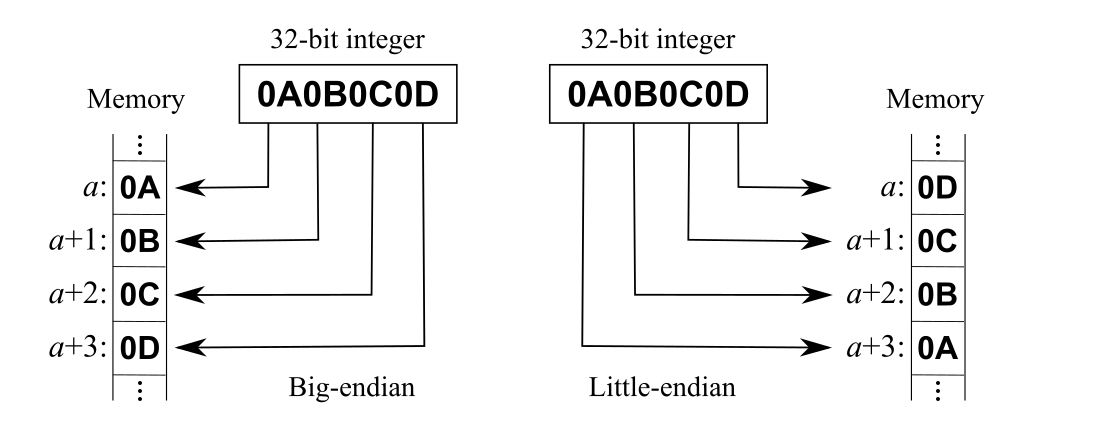1.17. Data Representation #
Data refers to the symbols that represent people, events, things, and ideas. Data can be a number, a name, and colours in a photograph.
Data representation refers to the form in which data is stored, processed, and transmitted.
Endianness #
Endianness is the sequential order in which bytes are arranged into larger numerical values, when stored or whe transmitted.
- Big Endian stores the most significant byte first
- Little endian stores the least significant byte first

Numbers #
- Decimal numbers (base 10): 0, 1, 2, 3, 4, 5, 6, 7, 8, 9
- Binary numbers (base 2): 0, 1
- Octal numbers (base 8): 0, 1, 2, 3, 4, 5, 6, 7
- Hexadecimal numbers (base 16): from 0-9 and a, b, c, d, e, f
Example: 19910 = 110001112 = 3078 = C716
Two’s complement is one of the ways that is used to represent negative numbers in binary.
Text #
Text is made up of characters and each character is represented by its own binary code.
ASCII #
ASCII (American Standard Code for Information Interchange) is a character-encoding scheme originally based on the English alphabet.
7-bits are used to represent 128 character, including 96 displayable characters and 32 control characters.
Each character in ASCII usually uses 8-bits with one wasted bit.
Extended ASCII is a superset of ASCII that uses 8-bits for each character, allowing for 256 total characters.
Unicode #
Unicode provides a unique number for every character, no matter the platform, program, or language.
Most widely used encoding schemes are: UTF-8, UTF-16, and UTF-32.
Images and Colours #
Images are representeed as a matrix of pixels and the colour of each pixel is represented by a binary code.
Resolution refers to the number of pixels in the width and height of the image.
Bit/Colour depth refers to the number of bits used to represent the colours of pixels:
- 8 bits: 3 bits for red, 3 bits for green, and 2 bits for blue
- 24 bits: 8 bits for each colour (red, green, and blue)